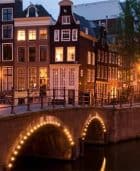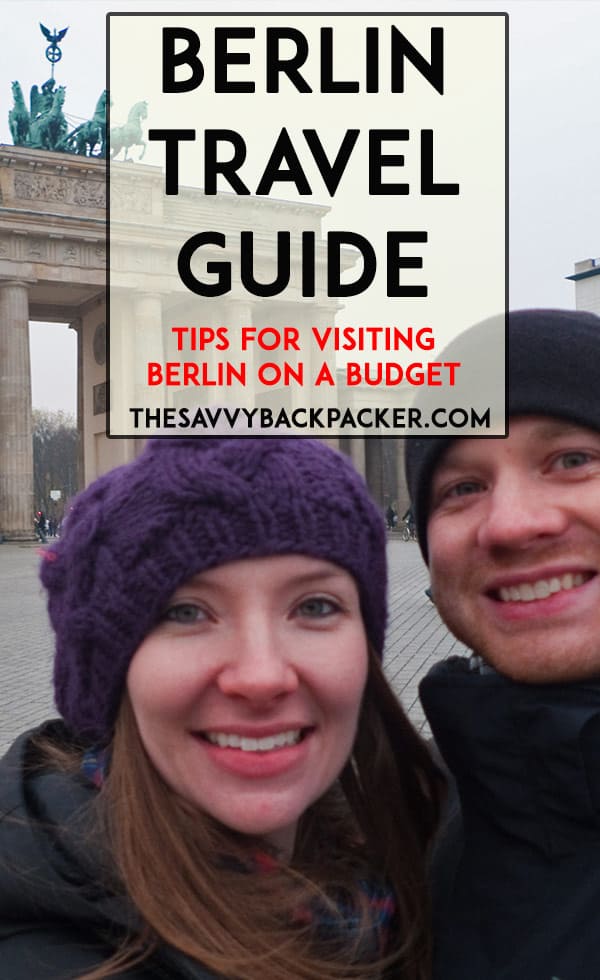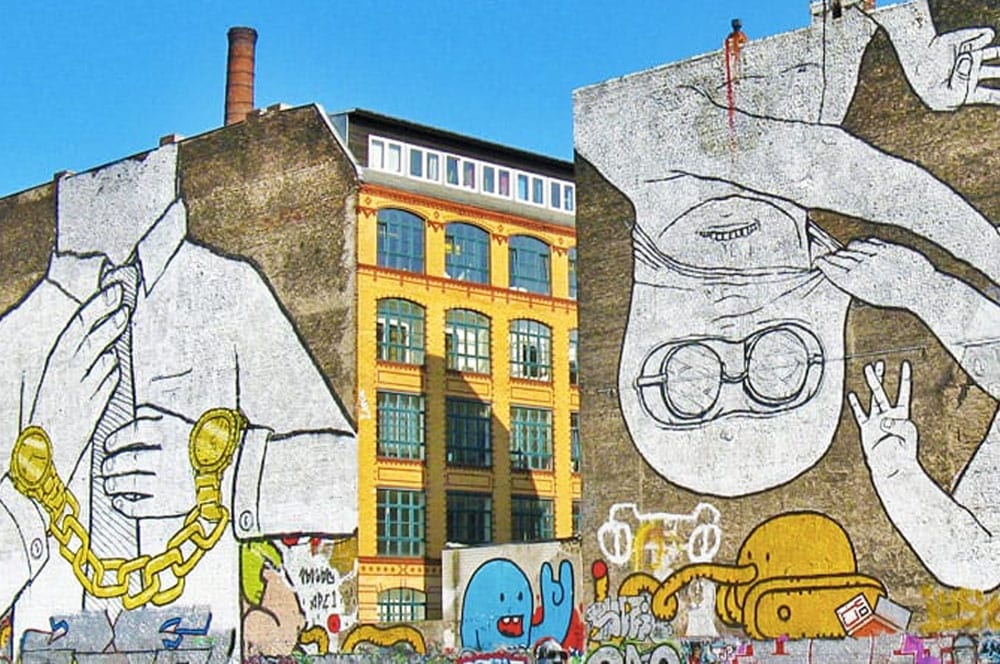
What makes Berlin so great? Berlin’s mayor said it best, “Berlin is poor but sexy.” I think that really sums up Germany’s capital city. Our Berlin Travel Guide will help you make sense of this crazy city while sticking to a backpacker’s budget.
What You’ll Find in This Berlin Travel Guide
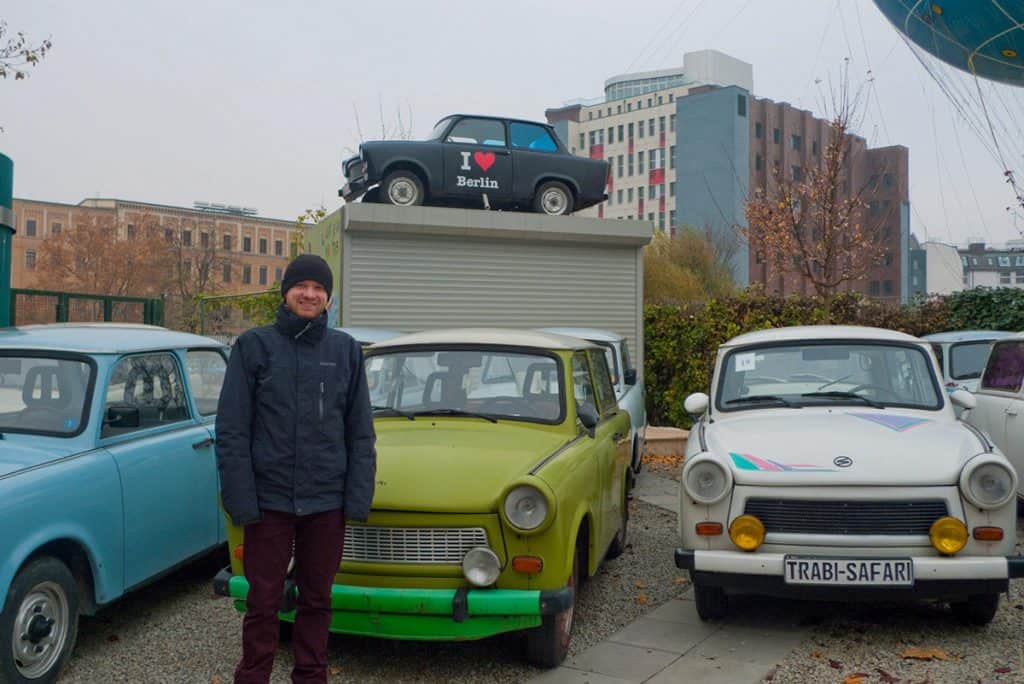
- How Much to Budget to Visit Berlin
- How Long To Visit Berlin
- The Good and Not-So-Good Things About Berlin: A Quick Overview
- Berlin’s Must-See Sights and Attractions // Neighborhood Guide
- Cheap Eats and Drinks
- Best Berlin Hostels
- Berlin Nightlife
- More Resources to Help You Plan Your Visit on a Budget
- Public Transportation
A bit of background of modern Berlin: After the fall of the Berlin Wall, people flooded into East Berlin (the part that was controlled by the Soviets). What did they find? Abandoned buildings. These cheap (and sometimes free) houses/workspaces attracted artists, musicians, and other creative people from all over the world because they could live there for practically nothing. This also injected a youthful, anything-goes spirit into the otherwise drab city.
Then Berlin got popular… so the city isn’t as cheap as it once was. But it’s still much cheaper than other major European cities. Luckily, the city still holds on to its youthful and creative spirit.
How Much to Budget to Visit Berlin
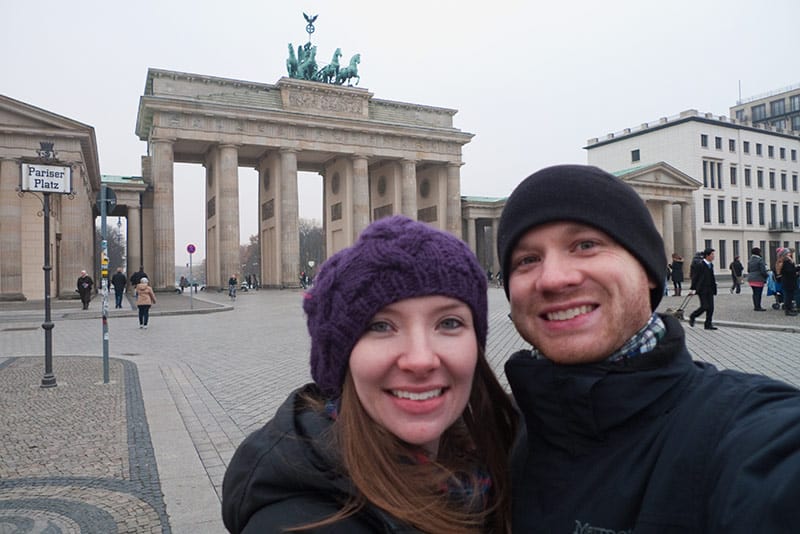
Alcohol is cheap, food is affordable, and accommodation is very reasonable — which is why Berlin is such a hotspot for artists, students, and budget travelers.
We recommend budgeting €35-€60/day if you’re on a backpacker’s budget. That said, if you stay in a hotel/rental apartment and eat out a lot then you’ll want to budget more. Visit Booking.com to see current hotel rates.
We suggest checking out our Berlin Price Guide for a more in-depth cost breakdown to help you better budget your trip.
How Long to Visit Berlin: 4+ Days
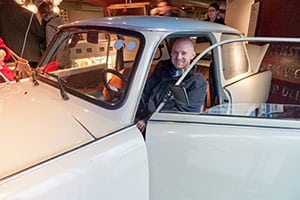
Berlin has a ton of stuff to do but the city is very spread out — so you’re going to want to give yourself plenty of time to explore. You could easily spend a week in Berlin, but we recommend at least four days.
The Good and Not-So-Good Things About Berlin: A Quick Overview
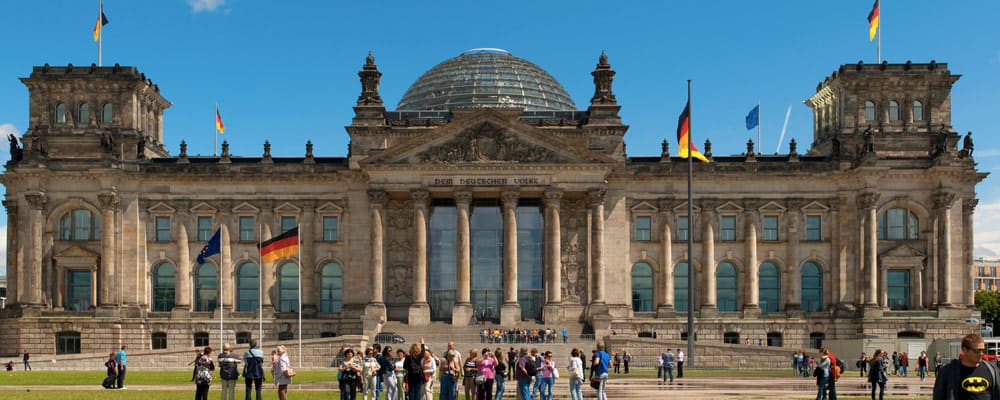
There are so many amazing things about Berlin, but there are a few things that aren’t so great — just like any city.
The Good
- Museums like crazy: Berlin has sooo many world-class museums that feature everything from ancient to modern. Its “Museum Island” has five world-renowned museums and the island itself is a UNESCO World Heritage Site. Bottom line, you’ll find something that interests you.
- Green space: Berlin has more green space than just about any city in Europe. And Germans appreciate their parks, so you’ll find tons of people relaxing outside when the weather is nice.
- A mixture of a city: We allude to this in the “not-so-good” section, but the city’s architectural mix is fascinating. On one hand, you have plenty of boxy utilitarian buildings left over from the Communist era. On the other hand, you have older and more ornate pre-war architecture (that survived the war or was rebuilt). And then, you have a lot of new construction that has gone up in recent years that are ultra-modern.
- Biking: Berlin has done a great job making sure the city is bike-friendly. You’ll find plenty of dedicated bike lanes as well as free/cheap bike-sharing programs.
- Public drinking and other laissez-faire attitudes: As long as you’re not interfering with other people, you can do what you want without being hassled. You’re free to drink in the parks. You can pretty much drink in the streets. You’re not supposed to drink on public transportation but you’ll generally be left alone if you’re not causing a scene.
- This attitude is also one of the reasons there are so many subculture groups in Berlin — you’re free to do what you want. This is also a reason why there is such a strong LGBT community in Berlin.
- Nightlife: Berlin is still one of the best cities, if not the best city, for nightlife — especially clubbing. The city’s large number of abandoned warehouses made it the perfect venue for massive clubs. Pretty soon, the best DJs in the world were calling Berlin their home. You can still find plenty of mega-clubs as well as smaller underground parties that pop up for a few months and then move somewhere else. The party literally never stops (as long as you can keep up).
- Berlin also has plenty of bars, cafes, beer gardens, jazz clubs, and just about anything else you can imagine.
- The prices: Beer is cheaper than water. Eating cheaply is easy. Hostels are cheap. Rental apartments are in abundance (and they’re cheap, too). The public transportation is… it’s actually kind of expensive (you can’t win them all).
The Not-So-Good
- Berlin is HUGE: Berlin is 5x the physical size of Paris but it has 25% of the population. And because the city was divided for so long, it never developed a true “center” as you find in most cities. There are basically mini-centers scattered throughout the city and it can take 30-45 minutes via the subway to travel from place to place.
- That also means the city isn’t very walkable — public transportation is great, though.
- It’s not “traditional” German: Most people imagine old-world Germany when they think about Germany… but Berlin is largely modern because it was virtually destroyed during WWII. Berlin is pretty drab — except for the colorful graffiti that covers nearly every inch of the city (which is actually pretty cool). In fact, the city is under constant construction, so you’ll see a lot of cranes and construction sites all over the city.
- Cold winters: Berlin’s winters are long, cold, and dreary.
Berlin’s Must-See Attractions & Neighborhood Guide
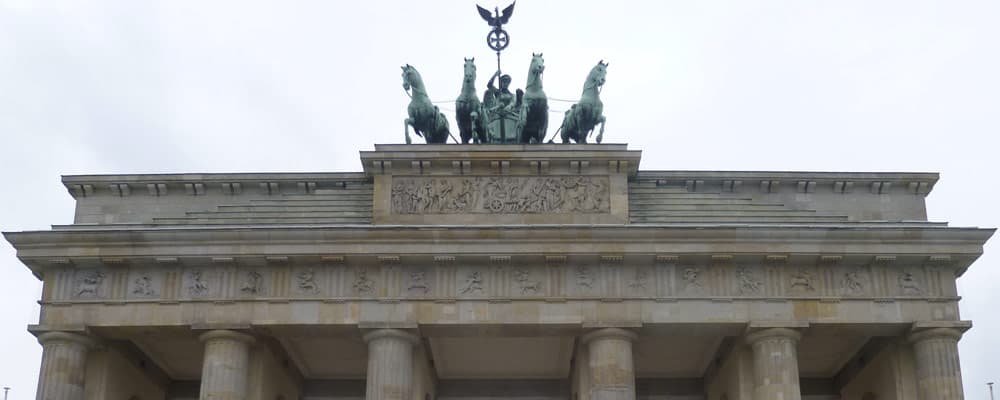
It’s no surprise why Berlin is such a popular destination as it is packed with things to do. We’ve listed many of the must-see sights according to their neighborhoods.
Mitte Neighborhood Overview
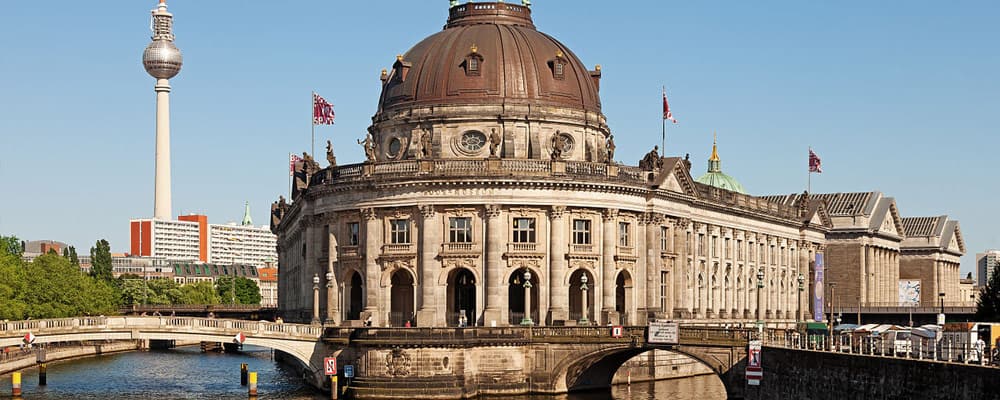
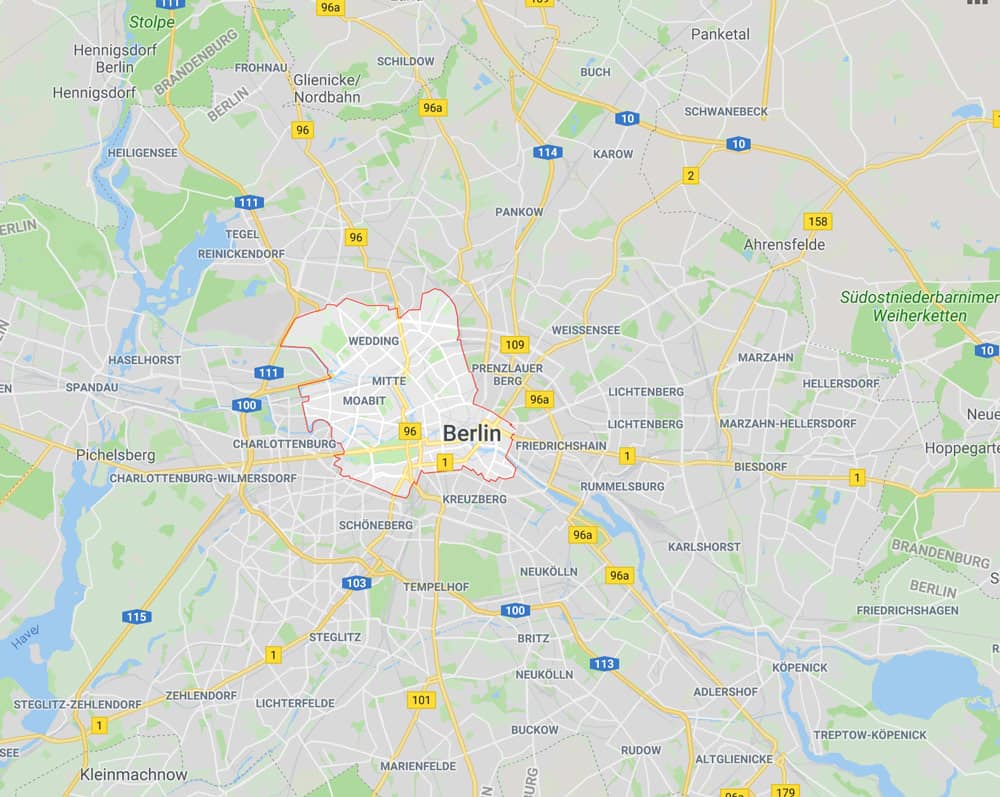
Mitte means “the middle” and it’s Berlin’s historical center… so it’s essentially the center of the city. This is where most of the popular sights can be found.
Of particular note is Museum Island — a small island in the Spree river that’s home to multiple museums.
The Mitte has a bit of everything — new, old, and futuristic. In addition to the museums, you’ll find shopping, cafés, restaurants, bars, clubs, universities, and a lot of other things to experience. It’s also the most “touristy” so you may want to stay in a different part of the city to get a more authentic Berlin vibe.
Pergamon Museum
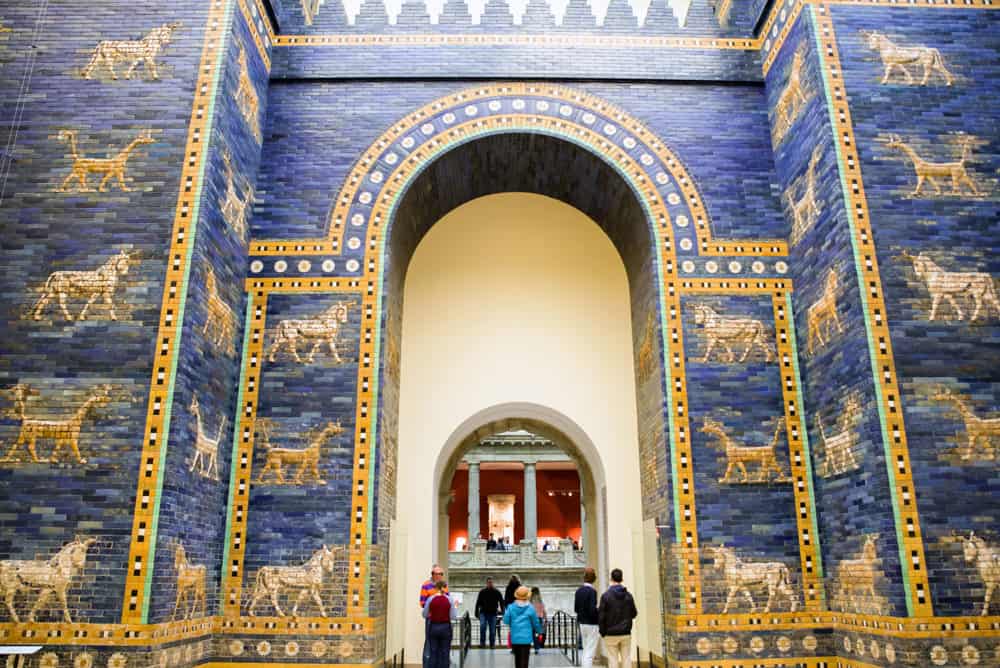
The Pergamon Museum, which houses an impressive collection of artifacts of the ancient world, is Berlin’s most prominent cultural and tourist attraction.
It is currently undergoing a major renovation so the museum’s main attraction, the Pergamon Altar, is closed until sometimes in late 2019. The museum will be in various states of renovation until 2025 but the Pergamon is still worth visiting as there is still plenty to see.
- Admission: €12
- Visit Website
- See On Google Maps
DDR Museum
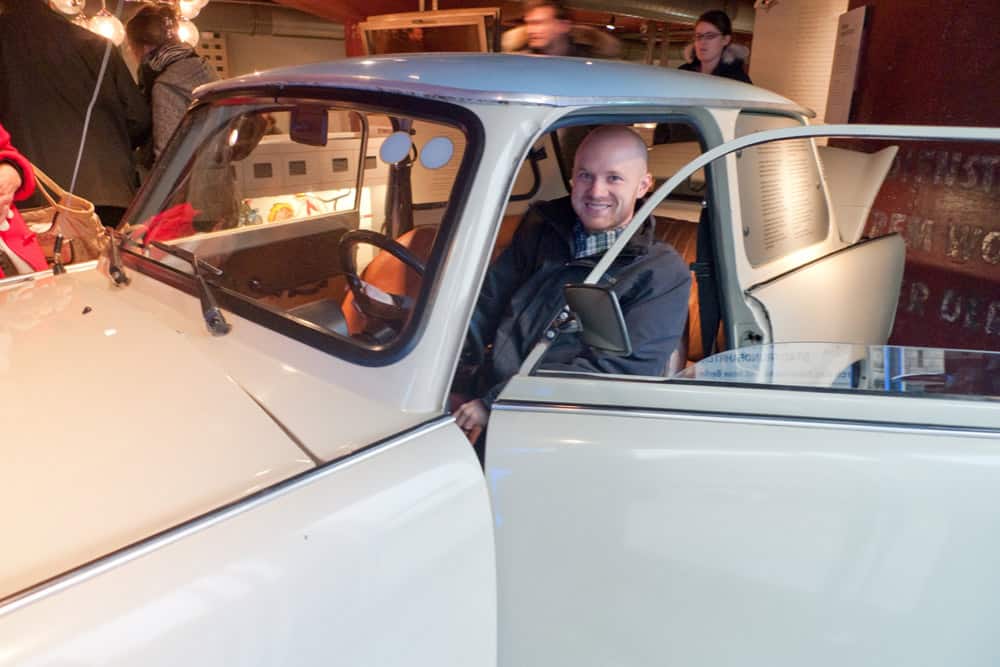
The DDR Museum is a quirky museum that chronicles the daily lives of people living in communist-era East Berlin. It has a ton of fun artifacts from that era, and it does a good job of comparing the lives of citizens in the West and East. It’s also a very interactive museum, so it’s a nice change of pace from Berlin’s other “heady” museums. I highly enjoyed my visit.
- Admission: €6
- Visit Website
- See On Google Maps
Hamburger Bahnhof Museum
Housed in a former train station, this is the place to visit if you’re into modern and contemporary art. It features art from Andy Warhol, Cy Twombly, Robert Rauschenberg, Roy Lichtenstein, Anselm Kiefer, Joseph Beuys, and many other notable artists.
- Admission: €14
- Visit Website
- See On Google Maps
The Reichstag
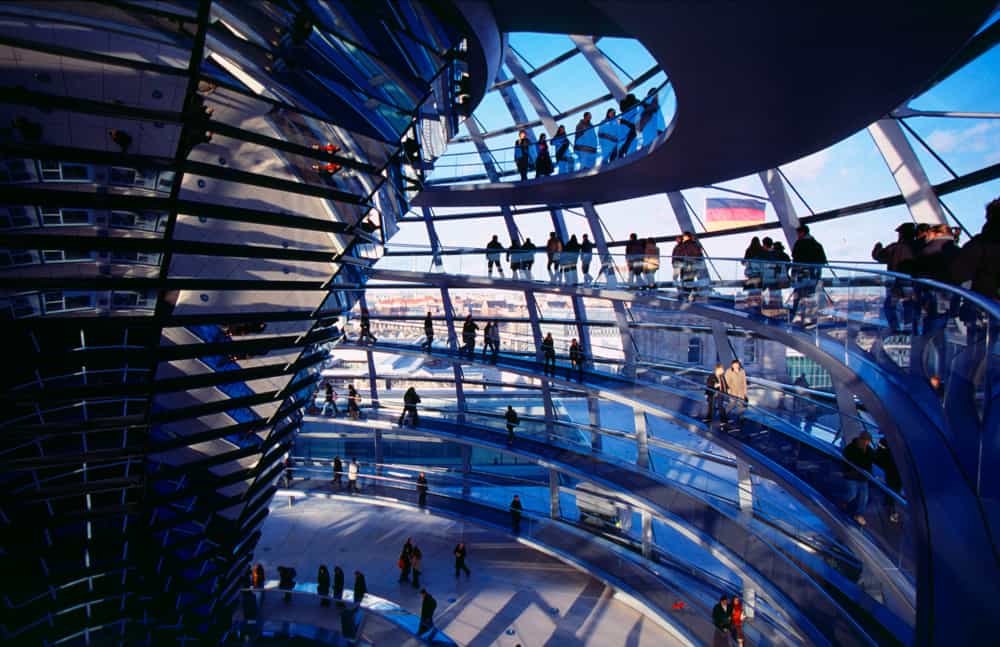
Dating back to 1894, the Reichstag has had a tumultuous history — it’s been burned, bombed, and abandoned but it’s been rebuilt and now it serves as the home of Germany’s parliament. There is a large glass dome at the top that you can climb to get amazing 360-degree views of Berlin and down into where the parliament sits.
Admission is free, but you must make reservations online. (You might be able to get tickets at the visitor’s desk, but booking online is the best option.)
Topography of Terror Museum
This is the site where the Nazis planned a majority of their crimes between 1933 and 1945. The buildings were destroyed at the end of the war but were rebuilt as a museum documenting Nazi crimes.
- Admission is Free
- Visit Website
- See On Google Maps
Memorial to the Murdered Jews of Europe
Also known as the Holocaust Monument, this monument is made up of 2,711 concrete columns that form a maze-like memorial. The monument is open 24/7.
German Historical Museum
Germany has a long and interesting past. This museum does a great in-depth job of capturing over 1,500 years of German history from its origins to the end of the Cold War.
- Admission: €15
- Visit Website
- See On Google Maps
Berlin Wall Memorial
Located in the middle of Berlin where East and West were once divided, this open-air exhibition chronicles the history of the Berlin Wall. The memorial still has almost a mile of the original wall for you to see and learn about how the wall affected Berlin citizens.
- Admission is free
- Visit Website
- See On Google Maps
Note: If you’re looking for Berlin’s iconic street-art covered walls you should go to the East Side Gallery instead. The Berlin Wall Memorial covers the history of the wall.
Brandenburg Gate
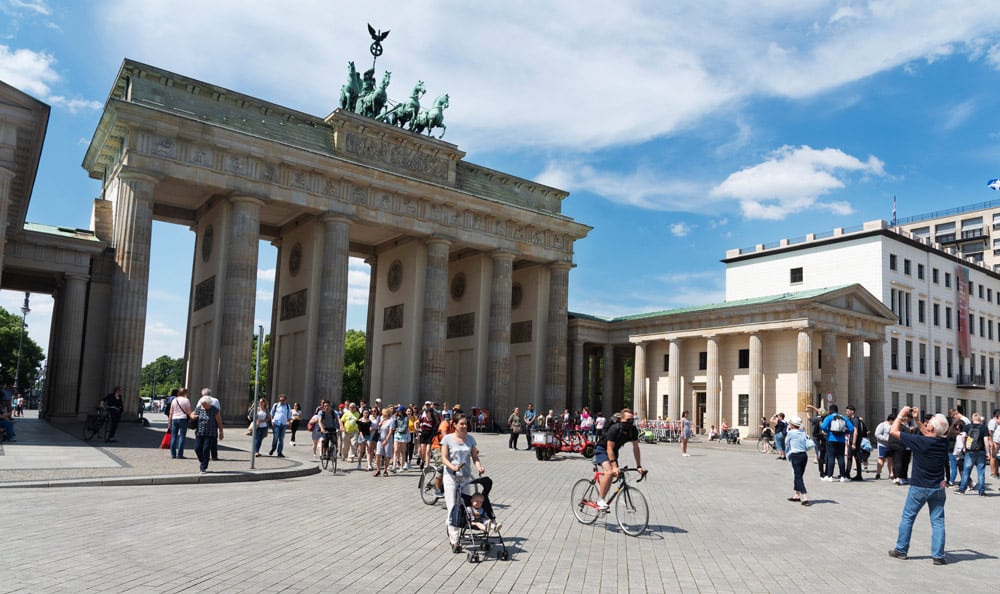
Constructed way back in 1791, the Brandenburg Gate is easily Berlin’s most famous landmark. I used to be the border of East and West Berlin, but now it represents the reunification of Germany.
Fernsehturm (TV Tower)
This weird-looking TV tower was built in the late ’60s in East Berlin, and it continues to be the tallest building in the city. While touristy, you can go to the top to get a nice 360-degree view of the city. There is also a bar and restaurant at the top if you wish to linger a little longer.
- Admission: €13-€20
- Visit Website
- See On Google Maps
Berliner Dom Cathedral
The Berliner Dom is not only Berlin’s most grandiose church, but it’s also easily one of Berlin’s most elaborate buildings. It has an impressive organ with 7,000 pipes, and you can visit the top of the dome for great city views (if you can climb all the steps).
- Admission: €7
- Visit Website
- See On Google Maps
Neuse Museum
This once bombed-out building now houses one of the finest collections of artifacts from the ancient world. Most famous is the bust of Nefertiti. The museum also has plenty of mummies, jewelry, sculptures, and other interesting artifacts.
- Admission: €12
- Visit Website
- See On Google Maps
Neue Wache and Babelplatz
I combined these two sights because they’re both quick visits and they’re very close to each other. Neue Wache is a small but powerful memorial for the Victims of War and Dictatorship.
Across the street is Bebelplatz. There you’ll find a small glass window on the ground that looks down into a library full of empty white shelves. This memorializes the spot where Nazi students burned over 20,000 “un-German” books.
Kreuzberg
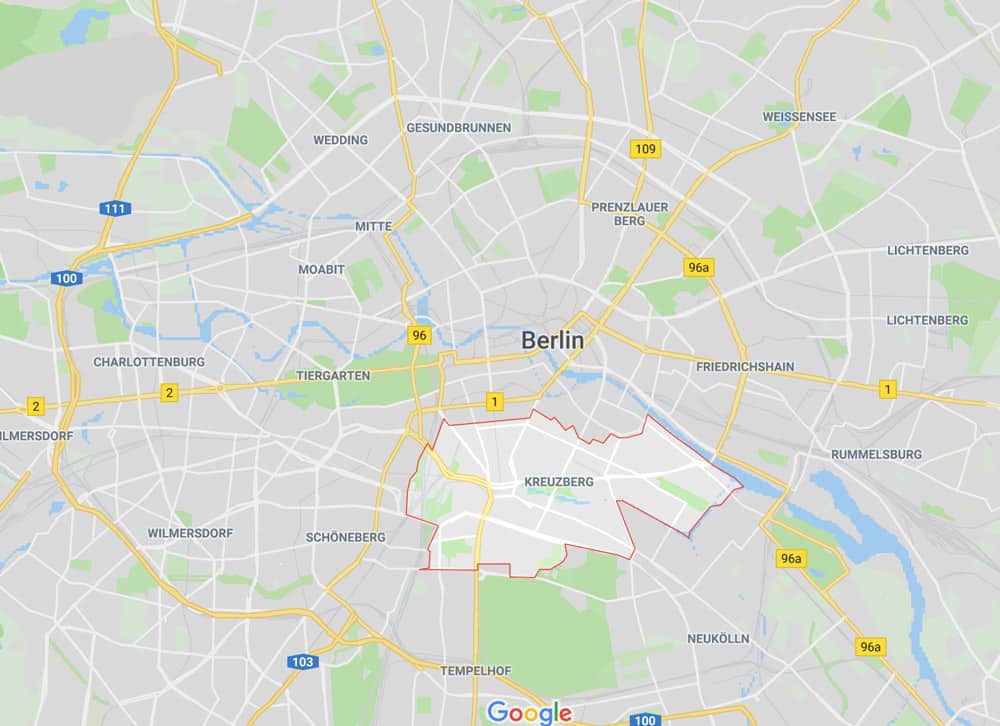
Kreuzberg was once home to immigrants, hippies, LGBTQ individuals, artists, squatters, punks, and bohemians. The neighborhood has gentrified, but it still holds on to its counter-culture roots.
There is still plenty of youthful energy pulsating through the streets, cafes, vintage shops, great bars, hip restaurants, and late-night food stalls. It’s a great area for nightlife so you can get a snack after dancing until 3 am. The neighborhood is also covered pretty much entirely in graffiti as well as amazing street art — which adds to the ambiance.
German Museum of Technology (Deutsches Technikmuseum Berlin)
This museum exhibits a large collection of historical technical artifacts — including 25+ full-size airplanes, boats, a Viking ship, u-boats, WWII rockets, trains, and more.
- Admission: €8
- Visit Website
- See On Google Maps
Jewish Museum
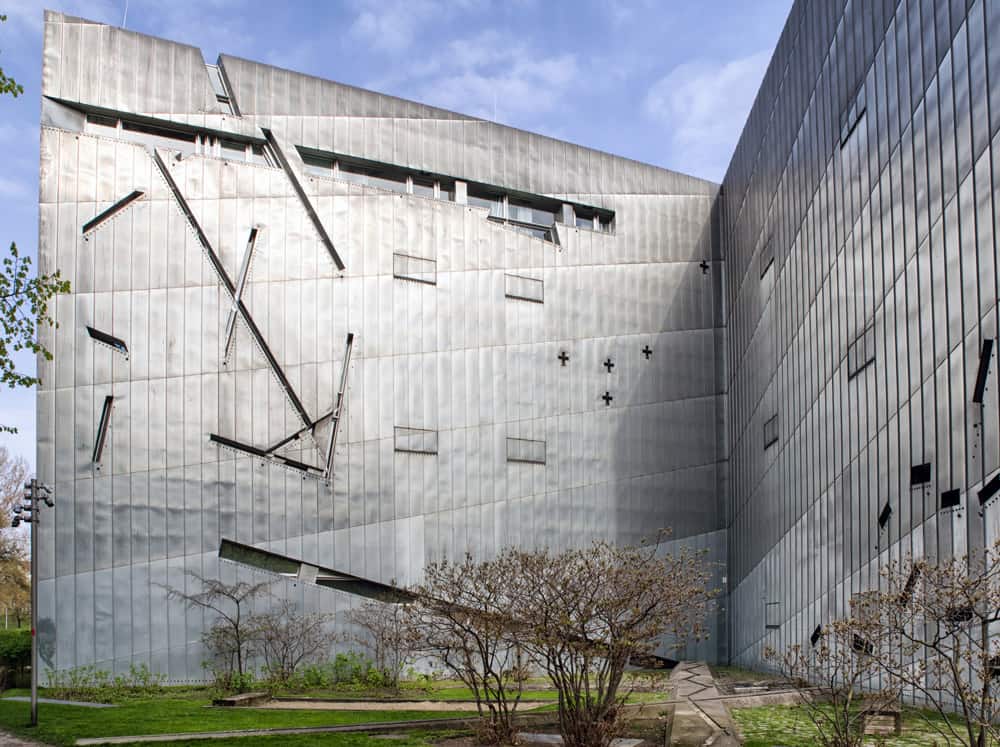
Housed in a very striking glass building, the Jewish Museum has exhibits that trace two millennia of German-Jewish history. The architecture of the building has become an exhibit in and of itself.
- Admission: €8
- Visit Website
- See On Google Maps
Checkpoint Charlie
This is a legit tourist trap that isn’t even at the location of the real Checkpoint Charlie… but you’ll probably end up walking past it anyways. Take a photo as you walk by but skip the museum because it gets bad reviews and is a waste of money.
Friedrichshain
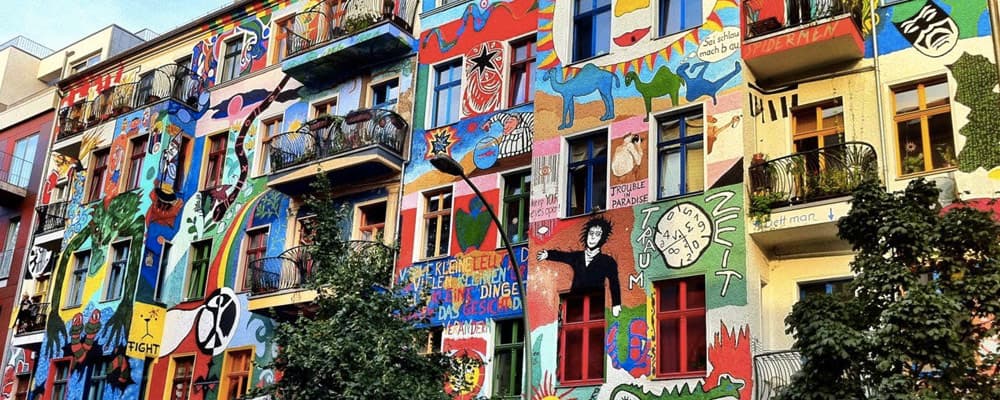
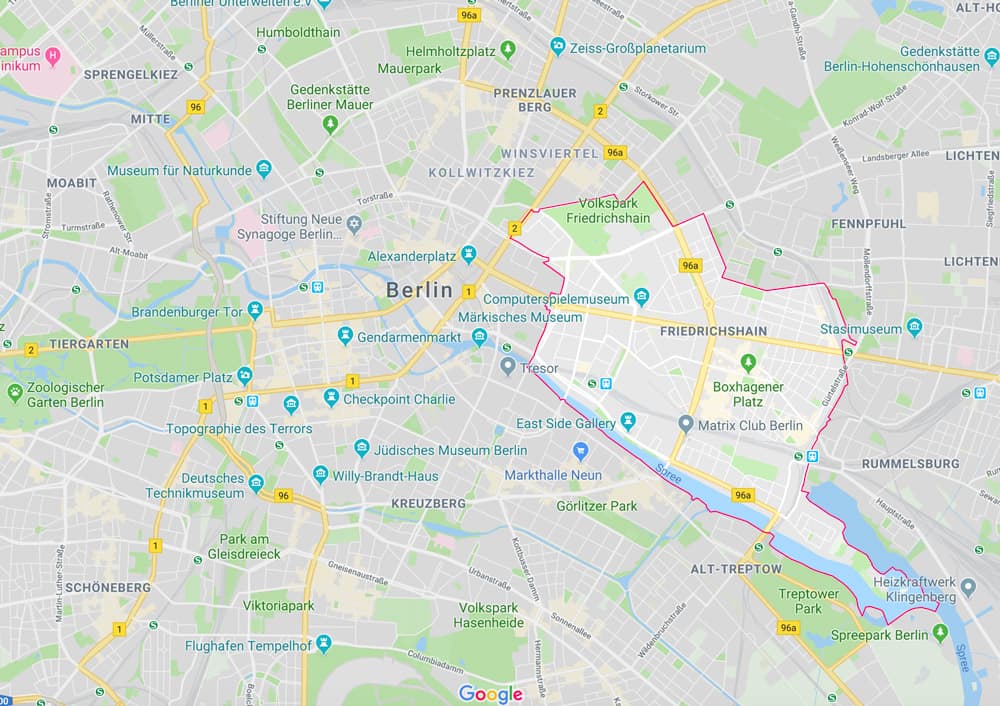
With a vibe very similar (yet slightly more alternative) to Kreuzberg, Friedrichshain is a trendy neighborhood popular with artists, students, and other young hip people. Building-size street art can be found everywhere and most people come to visit the famous East Side Gallery. The neighborhood is also home to many bars, boutiques, cafés, and markets — and it has some of the best nightclubs in the city.
East Side Gallery
This open-air gallery features street art that’s been painted on the longest remaining portion of the Berlin Wall. The wall features 101 large-format paintings. It is one of Berlin’s most visited sights so fire up your Instagram and head out there.
Stasi Museum
This museum details the exploits of the East German secret police — The Stasi. These guys spied on 6 million of East Germany’s 18 million citizens. They kept detailed records on its citizens via phone taps, hidden microphones, photographic surveillance, and multiple other methods.
We recommend taking the free guided tour in English which occurs at 3 pm from Thursday to Monday.
- Admission: €6
- Visit Website
- See On Google Maps
Prenzlauer Berg
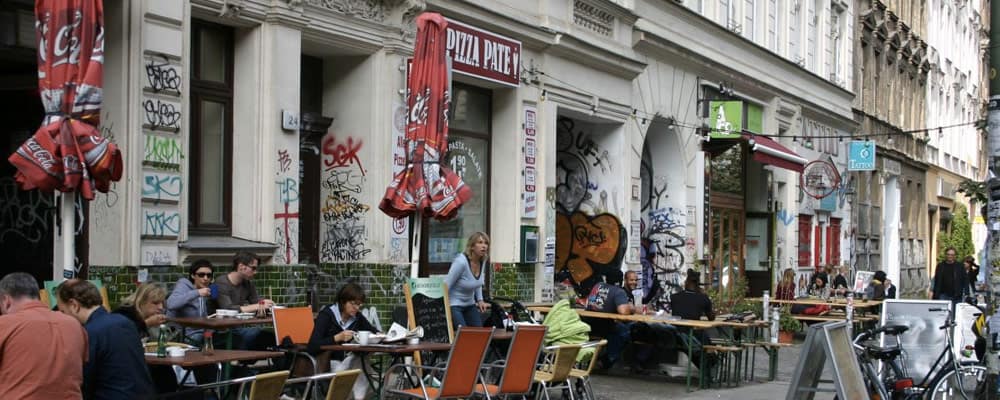
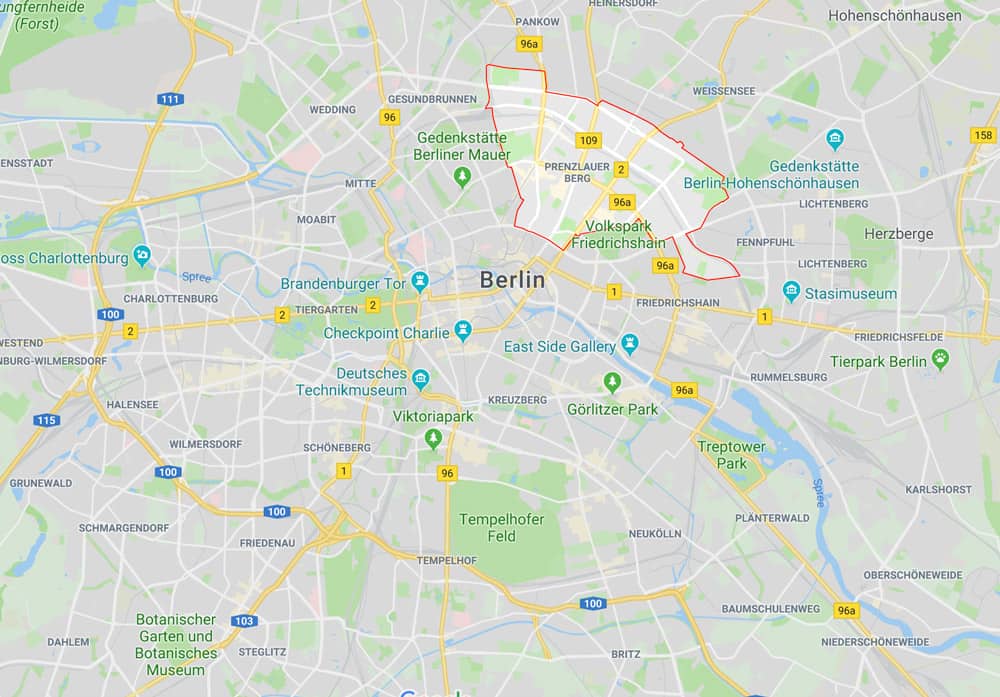
Prenzlauer Berg is a nice mix of university students and young families. You’ll still find plenty of late-night bars and cafés but much of the club-scene has moved elsewhere. People joke that Prenzlauer Berg is where the hip kids from Kreuzberg go to have kids.
That said, the neighborhood still has a cool vibe and you’ll find plenty of great restaurants, markets, beer gardens, and excellent coffee shops. The neighborhood also has plenty of trees, parks, and green space.
Mauerpark
Mauerpark translates to Wall Park — which makes sense because this used to be the “deadman’s land” between the walls of West and East Berlin. While not particularly pretty, the park is now a favorite for tourists and locals.
On a nice day, the park is packed with people drinking, playing soccer, and often karaoke-ing. The party often goes late into the night. The park also hosts a flea market every Sunday where you can sometimes pick up some good deals.
City West (Charlottenburg-Wilmersdorf Neighborhood)
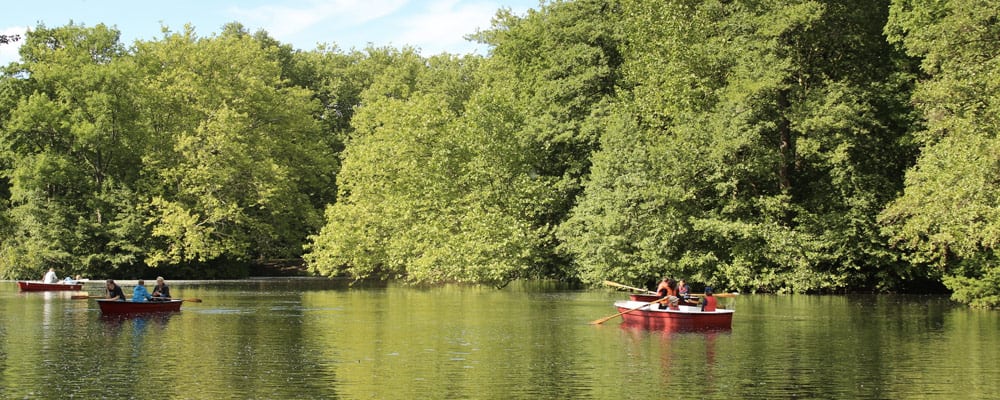
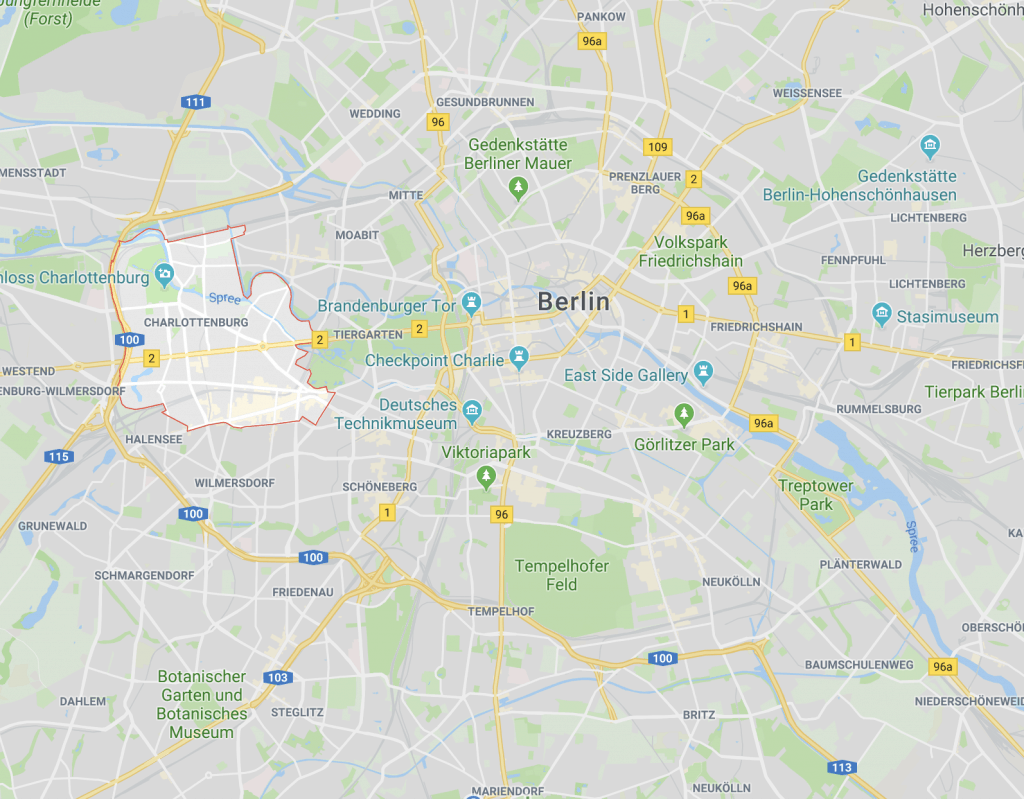
City West encompasses the Charlottenburg-Wilmersdorf as well as the expansive Tiergarten park. This area used to be West Berlin and is now an affluent area and shopping district. It also has many of Berlin’s popular sights as well as entertainment options, markets, bars, and restaurants.
Tiergarten
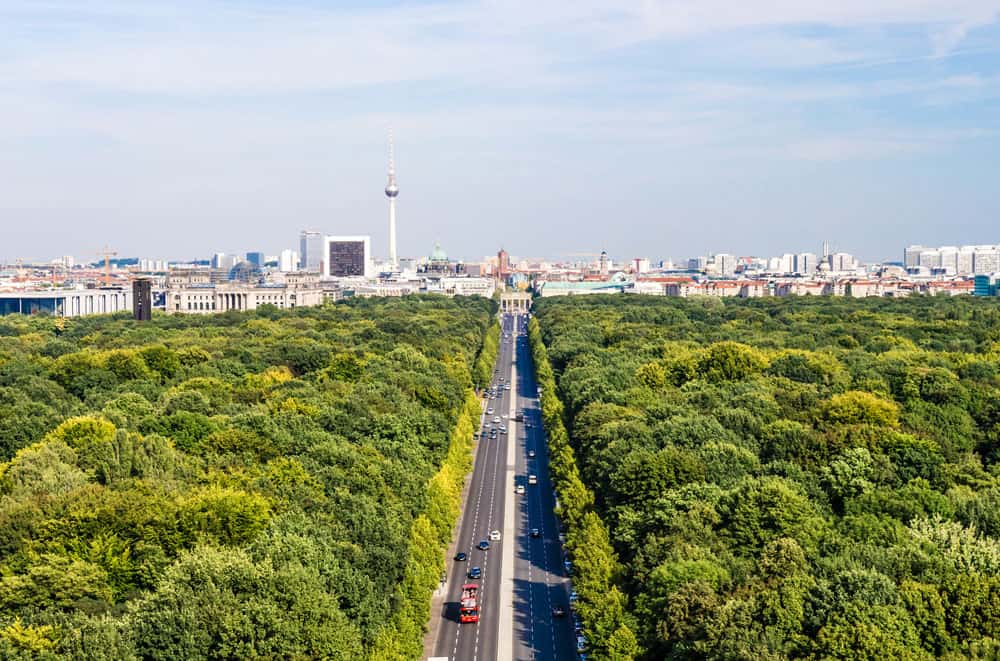
This massive park is located in the heart of Berlin, and it’s a favorite place for locals to get away from the city. In addition to multiple monuments and statues scattered throughout, the park also has ponds, gardens, vast lawns, plants, trees, and walking paths.
It is also home to the Berlin Zoo.
Olympiastadion
This huge stadium was built for the 1936 Olympics hosted in Germany and it’s where Jesse Owens won four gold medals (much to Hitler’s dismay). It was renovated in the early 2000s and it currently holds sporting events (mainly soccer) and massive concerts.
KaDeWe Department Store
Dating back to 1907, KaDeWe is the largest department store in Europe and this is the place to go if you want to spend some cash since it mostly carries high-end and luxury items. There is a famous (and expensive) gourmet food court and grocery that offers a ton of dining options.
Charlottenburg Palace (Schloss Charlottenburg)
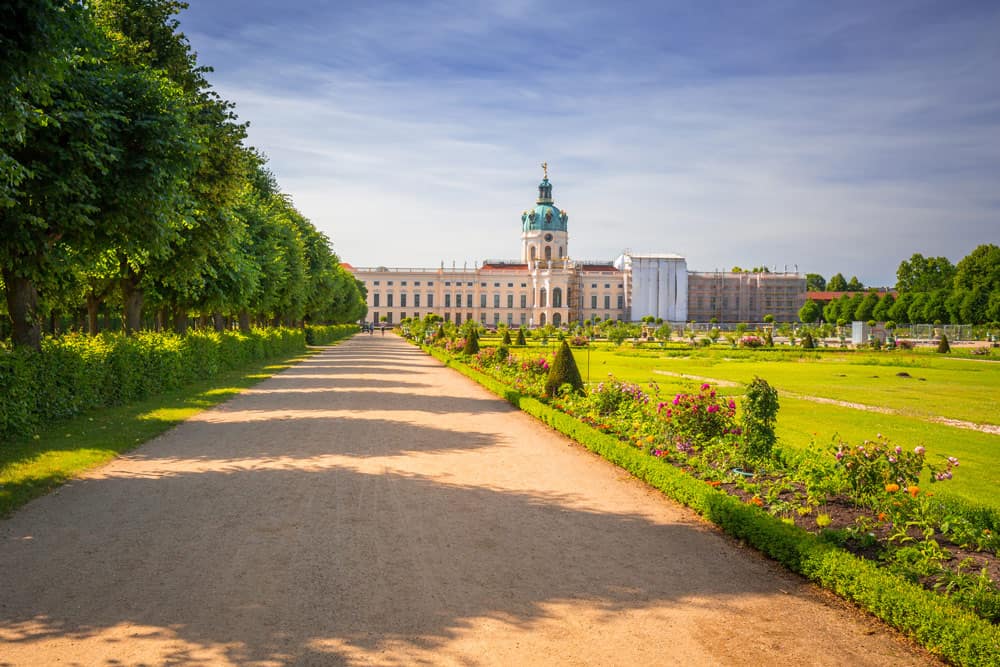
This grand royal palace was finished in 1699, and it’s the largest palace in Berlin. A lot of people find the inside of the palace to be fairly underwhelming but the grounds and gardens are beautiful. It’s a great place to stroll through on a nice summer afternoon (you might want to skip this if the weather isn’t nice).
What To Eat and Drink In Berlin
Berlin has an excellent food scene and there are plenty of budget options as well. Berlin also has a big street food scene so you can find vendors selling all kinds of things throughout the city.
In addition, Berlin has a very hip and international food scene so you can find just about anything you’re looking for. That said, we wanted to list a few local dishes that you might want to check out for yourself.
Currywurst
Currywurst is a true Berlin original and you’ll see it being served up by street vendors all across Berlin. Invented in 1949, this local favorite is a bratwurst covered in a mixture of ketchup, curry powder, and Worcestershire sauce.
Like spicy food? Order your currywurst ‘scharf’ — which means spicy.
Great Places To Get Currywurst:
- Curry 36: Classic spot. Super popular. Always rated as one of the best in Berlin. See On Google Maps
- Curry 61: Another super popular spots for Currywurst in Berlin. They even have veggie currywurst. See On Google Maps
- Konnopke’s Imbiss: Popular for a reason. Always a long line. See On Google Maps
- Curry Baude: Good, cheap, and fast. See On Google Maps
- Curry Mitte: Cheap and tasty. Currywurst, french fries, and a drink for under €6. See On Google Maps
Bratwurst
Ahh yes, the dependable and delicious bratwurst. These are sold by street vendors and restaurants all across Berlin. There are even guys called Grillwalkers who walk around with portable grills.
But honestly, most brats are pretty much the same in terms of quality so its the atmosphere that really makes a brat great.
Solid Places To Get Bratwurst:
- Anything From The Currywurst Section: All the best currywurst begins with quality bratwurst so every place on that list will be good.
- Prater Beer Garden: Great beer garden that has solid brats. See On Google Maps
- Dicke Wirtin: Classic German restaurant. See On Google Maps
- Gasthaus Krombach: Another classic German restaurant. See On Google Maps
Döner Kebab
Berlin has a huge Turkish population so it’s easy to find lots of delicious Turkish food — notably Doner Kebabs. Kebabs are cheap and filling so they make an excellent budget meal. Luckily, you can get a very good kebab throughout Berlin but there are a few standouts that we’ve listed below.
Solid Döner Kebab Spots:
- Mustafa’s Gemüse Kebap: See On Google Maps
- K’Ups Gemüsekebap: See On Google Maps
- Mustafa Demir’s Gemüse Döner: See On Google Maps
- Döner Dach: See On Google Maps
- Rüyam Gemüse Kebab: See On Google Maps
Wiener Schnitzel
Wiener Schnitzel is a thin, breaded, pan-fried veal cutlet. So good. And it is even better with an ice-cold German beer.
Solid Schnitzel Spots:
- Max und Moritz: Old school bar/restaurant that’s been serving up tasty authentic German dishes since 1902. See On Google Maps
- Scheers Schnitzel: A no-frill, cash-only spot that serves up a solid Schnitzel for cheap. See On Google Maps
- Felix Austria: Popular casual restaurant with generous portions and friendly service. See On Google Maps
- Schnitzelei: Excellent schnitzel and they give you a free beer with your meal. It is a little corporate/modern feeling so this isn’t the old school vibe many people are seeking out (but the food is still great). See On Google Maps
- Schnitzelkönig: Huge portions and great prices. Come hungry. Local favorite. See On Google Maps
- Prater Beer Garden: Cool beer garden and they have sell schnitzel as well. See On Google Maps
- Café Restaurant Jolesch: Excellent schnitzel. Higher-end spot. Nice cocktails as well. Reservations highly suggested. See On Google Maps
Spätzle
One of Germany’s most beloved foods is the humble, yet hardy Spätzle — which is an egg noodle dumpling. You’ll be able to find it in just about every German restaurant.
Some Tasty Spätzle Spots:
- Spätzle Club: Large portions of delicious home-made Spätzle. See On Google Maps
- Spätzle & Knödel: These guys serve up some mean German comfort food — including excellent Spätzle. See On Googe Maps
- Schwarzwaldstuben: Relaxed bar/restaurant with Germany fare and a range of beers. Casual spot with a nice vibe. See On Google Maps
- Joseph-Roth-Diele: Cozy spot with a traditional ambiance, simple menu, and affordable prices. See On Google Maps
Königsberger Klopse
Königsberger Klopse ( meatballs in a white sauce) is true German comfort food. This is another staple that will be on the menu of just about every traditional German restaurant.
Where To Go:
- Max und Moritz: Old school bar/restaurant that’s been serving up tasty authentic German dishes since 1902. See On Google Maps
- Felix Austria: Popular casual restaurant with generous portions and friendly service. See On Google Maps
Half Grilled Chicken
Berlin is also famous for its grilled chicken so you’ll find a number of places serving up grilled half-portions of chickens.
Where To Get Grilled Chicken:
- Henne: The most famous place to go for crispy chicken in Berlin. So good. Go twice. See On Google Maps
- Hühnerhaus: Excellent takeaway chicken spot. No-frills and affordable. Aways hopping for a reason. See On Google Maps
Brezel
I mean, you can’t beat a giant pretzel and beer. So go find a nice beer garden and enjoy your pretzel.
Berliner Pfannkuchen
A Berliner Pfannkuchen is a traditional German pastry that’s basically a jelly-filled doughnut without a hole. Any good bakery will have multiple variations.
Where To Get A Great Berliner Pfannkuchen (& Other Baked Goodies):
- Siebert Bakery: This is the oldest bakery in Berlin and they make plenty of baked goodies. They’re still family-owned. See On Google Maps
- Bäckerei & Konditorei: Excellent Berliner doughnuts and a few other goodies. See On Google Maps
- Zeit für Brot: So many baked goods. We’re fans of the cinnamon rolls but everything is good. See On Google Maps
- Bäcker Walf: Excellent homemade baked goodies. See On Google Maps
- Bäckerei Ladewig: Local spot and everything is homemade. Family-run since 1969. See On Google Maps
Beer in Berlin
While the Bavarian part of Germany (notably Munich) is most famous for its beer, Berlin also has a thriving beer scene. Furthermore, Berlin also has a solid craft beer scene if you’re looking to expand past the standard German brews.
One of the most popular beers in Berlin is the Berliner Weisse — a sour beer with only 3% alcohol. Bars will often add flavored syrup like raspberry (Himbeersirup), or woodruff (Waldmeistersirup) which turns the beer bright red or green. It’s very tasty.
German/Berlin Beers
German beer tends to be fairly similar as they had a law called Reinheitsgebot (Beer Purity Law) that was enforced until 1993 that said beer could only be made from water, hops, and malt. So the beer was of great quality but there wasn’t much innovation.
These days many breweries still follow the Reinheitsgebot but others are starting to experiment and create new kinds of beer.
The Official Visit Berlin Website has a great guide of Berlin’s local micro-breweries. Here is a nice article from St. Christophers about nice craft beer bars in Berlin. We also like this guide from TimeOut: Berlin about their favorite bars in Berlin. Of course, these links don’t even scratch the surface but hopefully it helps get you started.
Most German grocery stores will stock multiple different kinds of beer so you won’t have to search very hard to find a drink. Plus, beer from the grocery store is cheap!
Berlin’s Beer Gardens
You can’t visit Germany without enjoying a few frosty beers al fresco and luckily Berlin has plenty of beer gardens. Low on cash? You can always buy beer from the grocery store and drink in the park.
- Prater Beer Garden: This is Berlin’s oldest beer garden and it’s also one of its biggest — it can seat over 600 people. They have a nice selection of beers, tasty snacks, and a fun atmosphere. We recommend trying the bratwurst and apple strudel. We also like how everything is self-service here. See On Google Maps
- Weihenstephaner: Located in a building that dates back to 1749, this super traditional Bavaria-style beerhall and they also have a nice courtyard. See On Google Maps
- Hofbräu Wirtshaus Berlin: Bavarian food & beer. A bit touristy and a little expensive but still a solid spot. See On Google Maps
- Schleusenkrug: This lovely beer garden is located on the edge of the Tiergarten. They might not have a huge selection of beer but the vibe is energetic and super friendly. See On Google Maps
- Café am Neuen See: This secret spot is located in a park right beside a pond so the atmosphere is very peaceful. They have a great beer selection and decent food options. Prices are reasonable. See On Google Maps
Cheap Eats and Drinks
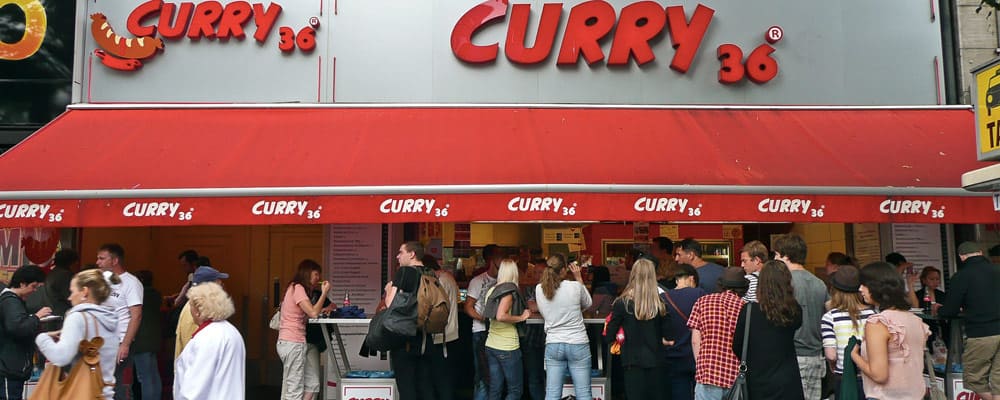
As with any other city with a youthful international population, Berlin has a solid food scene that caters to people on a budget. There are always new and exciting restaurants and bars opening up, so finding solid dining options doesn’t take much work.
Cheap Breakfast In Berlin
- Brammibal’s Donuts: Donuts, coffee, and other breakfast sweets.
- Back-Factory: Cheap pastries for a quick breakfast on the run.
- Cafe Creperie Melt: Cakes, crepes, and galettes.
- Homemade: Brunch and breakfast with plenty of vegetarian options.
- Romeo und Romeo: Lots of healthy and vegetarian options at this chilled-out spot.
Cheap Lunch and Dinner In Berlin
- Scheers Schnitzel: Tasty and affordable German classics like schnitzel.
- Curry61: Famous currywurst and other traditional German street food.
- Tiergarten Quelle: German pub serving up traditional German dishes.
- Lia’s Kitchen: Plenty of great vegan options.
- Trattoria Portofino: Pizza, pasta, and other great Italian options.
- Flamingo Fresh Food Bar: Sandwiches, soups, and a bit of everything.
- Burgermeister: Best burgers in Berlin.
- Mabuhayt: Authentic Indonesian food at great prices.
- Patta Finest Baked Potatoes: Tasty loaded baked potatoes.
- Yarok Fine Syrian Food from Damascus: Tasty falafel and other middle eastern food.
- PHO – Noodlebar: Affordable PHO and other Vietnamese food.
Street Food, Food Halls, & Farmers Markets
- Street Food Thursday @ Markthalle Neun: This was the first major organized street food event in Berlin and it is still one of the most exciting. It attracts thousands of visitors each week. You’ll find multiple excellent food vendors, craft beer, wine, cocktails and more. Open every Thursday from 5pm-10pm. See On Google Maps
- Arminius Market Hall: Opened in 1891, this nice market hall has vendors selling local food, crafts, art, and more. See on Google Maps
- Bite Club: A cool new concept street food party located next to the Spree river in Berlin. Booze, food trucks, BBQ, DJs, and all that cool stuff. Check their Facebook page for dates and location.
- Middle-Eastern Street Food Market: At this twice-weekly (Tuesday and Friday) outdoor market you’ll find vendors selling Turkish fare, fresh produce, seafood, and other random things. See On Google Maps
- Boxhagener Platz Farmers Market: This Saturday market focuses on organic produce and a smattering of standard street food options. See on Google Maps
- Thai Park: For a truly unique experience we suggest spicing it up with authentic Thai food as this unique food market that’s been operating for more than 20 years. This area on the outskirts of Berlin has long been home to a large Thai population who would visit this park to sell their food. Then other locals started catching on to the amazing food… and now it’s super popular. You’ll have the most luck by visiting on Saturdays and Sundays in summer. View on Google Maps
- Kollwitzplatz Farmers Market: Some of the freshest food in Berlin. Open every Thursday. See On Google Maps
More Berlin Restaurant Resources
When in doubt, ask the locals! Below are a few excellent resources about food in Berlin.
- Berlin Food Stories: This Berlin food blog is excellent — it might be the only resource you need. The author covers everything from high-end to hole-in-the-wall joints.
- They also have an excellent list of recommended list of kebab restaurants if you’re looking for a tasty meal for around €3-€4.
- Eating In Berlin: Another excellent food blog that covers Berlin’s food scene.
- TimeOut Berlin: TimeOut always does a solid job of showcasing new and popular food/drink spots so it’s another good place to look.
- Spotted By Locals – Berlin: Spotted By Locals is a great resource that’s written by locals and expats (they also have a paid app that offers more suggestions).
Best Berlin Hostels
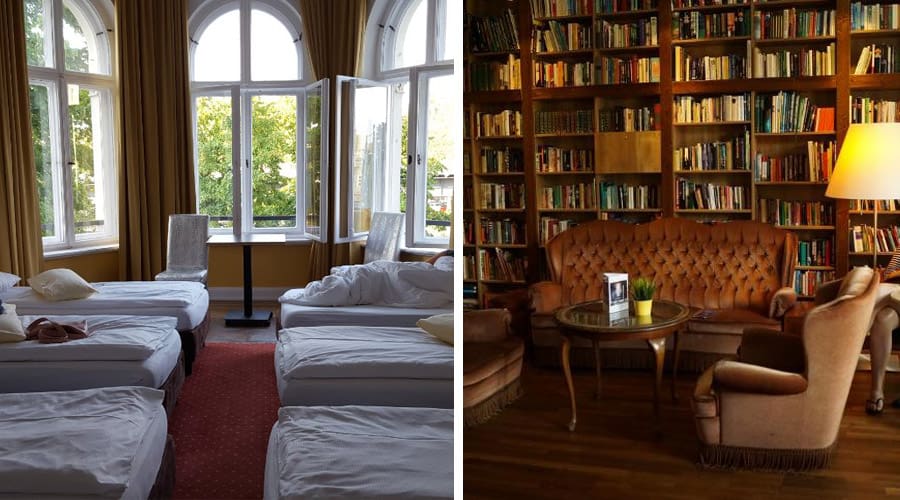
Berlin has plenty of highly-rated hostel options and they’re all priced very reasonably — an average hostel will cost anywhere from €14-€30/night.
Personally, we use HostelWorld to book all our hostels. Here are some of the best-rated hostels in Berlin:
- EastSeven Berlin Hostel
- Wombats City Hostel Berlin
- The Circus Hostel
- PLUS Berlin
- Jetpack Alternative
- Pfefferbett Hostel
Berlin Nightlife
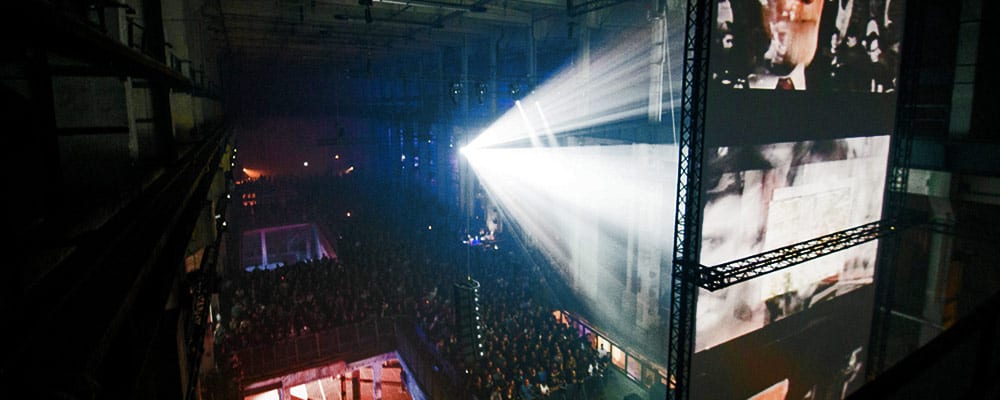
Berlin is world-famous for its nightclubs and overall nightlife scene — it’s actually one the city’s largest draws. Many of the best DJs show off their skills in Berlin; check out Resident Advisor to see where DJs will be playing.
Thrillist and TimeOut both have a good rundown of the best nightclubs in Berlin.
If you really want to learn the nitty-gritty about Berlin’s nightlife scene, check out Vice’s Guide To Berlin’s Nightlife.
By the way… getting into clubs isn’t always easy. Some clubs (i.e. Berghain) are known for turning away a majority of people. Here are some tips for getting past the notoriously finicky doormen:
- Don’t go in big groups — keep it under four people. And a group of all dudes probably won’t get in.
- Don’t show up drunk.
- Be quiet in line. Loud = no entry.
- Try to speak a little German. Even “Sorry, I don’t speak German” will help.
- Go with a local. This will make things a lot easier.
- Dress like a Berliner. Don’t dress up.
More Resources to Help You Plan Your Berlin Budget Travels

Berlin is packed to the gills with things to do… so you’ll want to do a little research before you arrive. We’ve listed a few of our favorite budget-minded guidebooks, websites, and expat blogs that you may want to check out.
- Rick Steves — Berlin (guidebook)
- Lonely Planet — Berlin (guidebook)
- Spotted By Locals: Berlin
- Berlin Food Stories
- Still In Berlin
- Slow Travel Berlin
- ExBerliner
- Travels of Adam
- Still In Berlin
- iHeartBerlin
Traveling Around Berlin
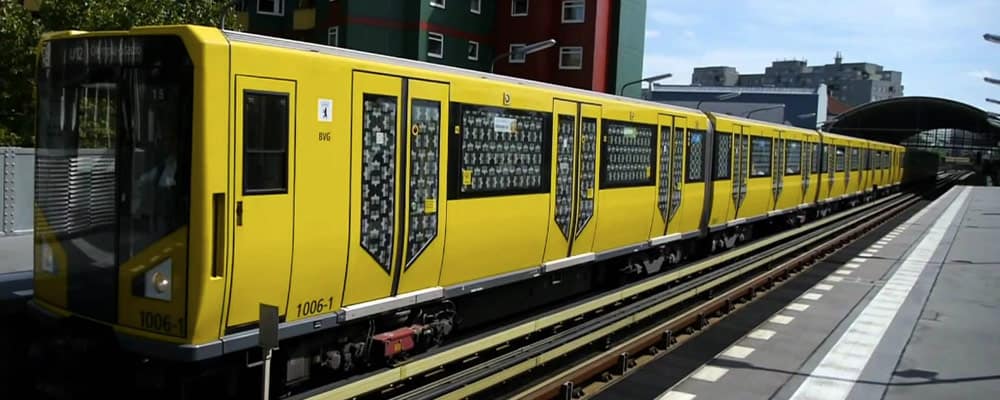
Berlin is a huge, sprawling city, so you’ll need to take public transportation. Luckily, it is plentiful; you’ll find subways, trains, trams, buses, bikes, and taxis. The U-Bahn, S-Bahn, bus, tram, and regional rail all use the same ticket. Don’t forget to validate your ticket before entering the train.
- Single One-Way Ticket: €2.80
- Short Distance (three-stop) Single One-Way Ticket: €1.50
- Day Card: €7.00
- Small-Group Ticket (for up to five people — this is the most cost-effective for three people and above): €19.90
- Bike Rental: €8-€15/day
- Bus between Tegel Airport and City Center: €2.80
- Taxi Between Tegel Airport and City Center: €25–€35
- Berlin Schönefeld Airport Express Train: €1.60
- Taxi Between Schönefeld and City Center: €50+
Practical Travel Tips
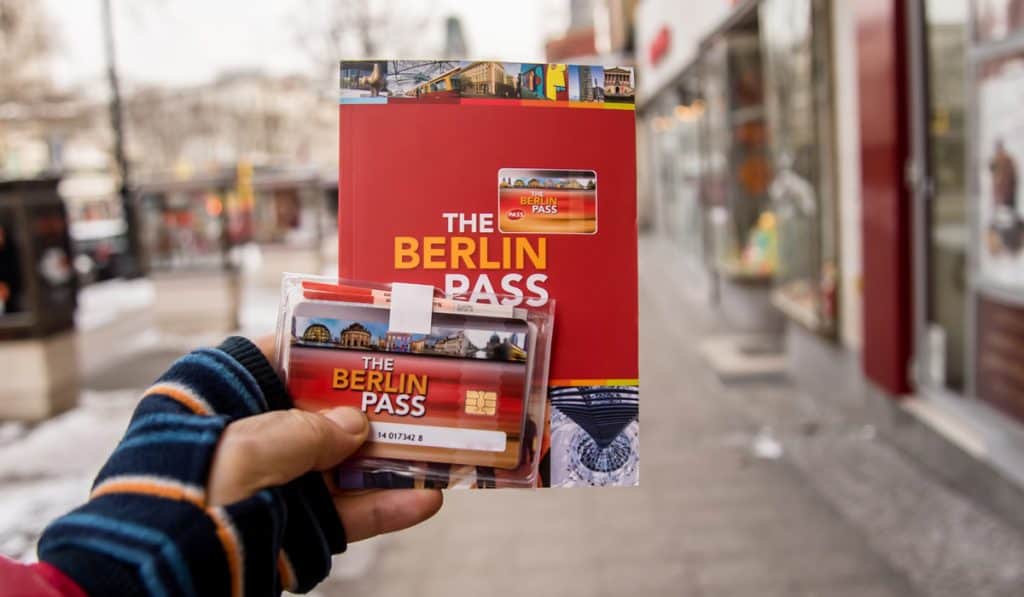
Save Money With a Berlin Pass: If you plan on seeing a lot of museums, you might consider getting a Berlin Pass. It could save you a bit of money.
Take A Walking Tour: It’s a great thing to do on your first day as it’s a good way to get orientated with the city.
There are good free (tip-based) tours from Sandeman’s New Europe and Brewer’s Berlin Tours — these tours will hit many of the highlights. If you’re looking to learn more about the alternative sides of Berlin, you should check out Alternative Berlin Tours.
Of course, there are a ton of paid tours that are led by professional guides that will give you more in-depth information. Check Get Your Guide as they have multiple walking and bike tours.
Visit Flea Markets for Cheap Souvenirs: The flea market at Mauerpark is the most famous, but it’s also the most touristy (i.e., it’s overpriced). You’ll need to venture out to find the best deals. This is a good site that lists most of the markets in Berlin.
Bring Your Student ID: Most museums have student prices (usually 1/2 price). It helps if your ID has a date on it — I was turned away for using my old ID, so your results may vary.
Winters Are Tough. Dress Warm: Invest in a legit warm coat, hat, gloves, and warm clothes if you visit in the winter. Don’t worry about fashion as everyone, including the locals, is bundled up.
Backpacking Packing Tips & Tricks
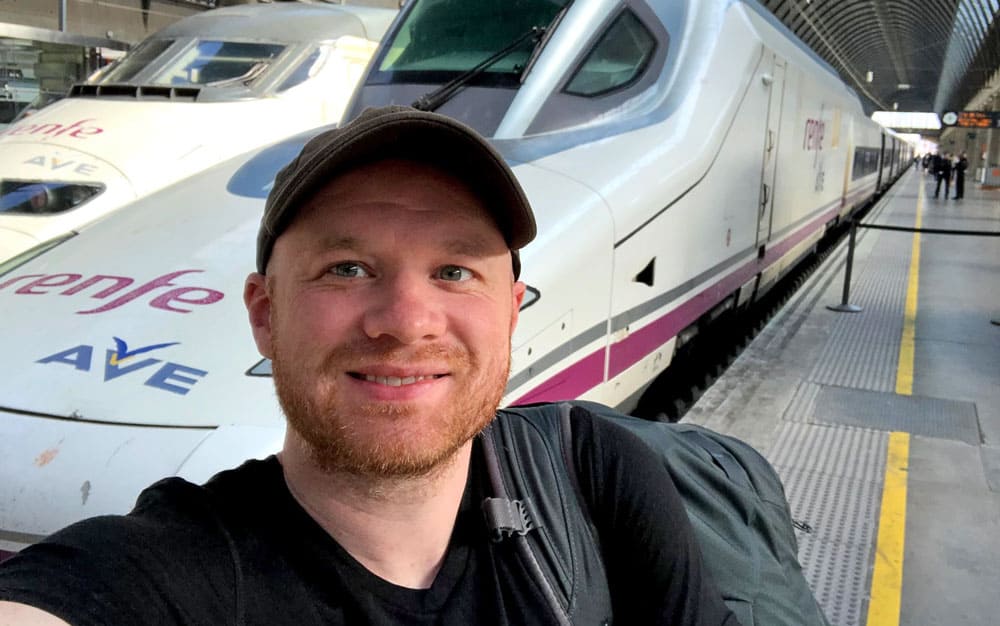
If you’re looking at this article, I’m going to bet you’re getting ready to travel. Check out these helpful articles that we wrote for tips and advice for packing for your trip.
- Backpacking Europe Packing List for Women
- Backpacking Europe Packing List for Men
- Best Travel Backpacks for Europe
Insure Your Trip
Not to get all doom and gloom but it can get very expensive when things go wrong on the road. Travel insurance is a cheap way to cheap way to ensure you don’t end up with a $10,000+ medical bill. We like World Nomads they’re affordable and it only takes a few minutes to get covered.
- Guide To Using Smartphones, SIM Cards, and Data Plans In Europe - August 2, 2025
- Backpacking Europe Packing List — My Europe Travel Packing Guide - July 26, 2025
- The Best Travel Backpacks | In-Depth Buyer’s Guide & Backpack Reviews - July 5, 2025

No Funny Business
The Savvy Backpacker is reader-supported. That means when you buy products/services through links on the site, I may earn an affiliate commission—it doesn’t cost you anything extra and it helps support the site.
Thanks For Reading! — James
Questions? Learn more about our Strict Advertising Policy and How To Support Us.
